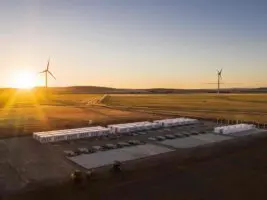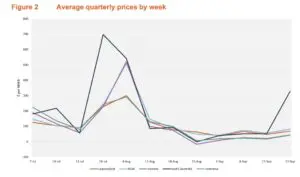The transition of the global energy system away from fossil fuels and towards renewable hydrogen could lead to a significant reassessment of geopolitical relationships – potentially supporting the emergence of new global powers, according to a new report published by the International Renewable Energy Agency (IRENA).
According to the IRENA report, Australia is well placed to retain its status as a leading global energy exporter, provided it embraces its renewable hydrogen production potential, even as global demand for fossil fuels dwindle.
Just as fossil fuel resources have long been influential on geopolitical developments, the latest IRENA assessment suggests an emerging hydrogen industry could reshape global political and economic relationships, potentially bringing new participants into the global energy market and reshaping the roles of current energy market powers.
“It is green hydrogen that will bring new and diverse participants to the market, diversify routes and supplies and shift power from the few to the many,” director-general of IRENA, Francesco La Camera, said.
“With international co-operation, the hydrogen market could be more democratic and inclusive, offering opportunities for developed and developing countries alike.”
The IRENA assessment found that renewable hydrogen could be a much larger focus of international trade compared to fossil fuels, forecasting that as much as 30 per cent of global hydrogen production would be traded across country borders by 2050 – a much larger proportion compared to fossil gas.
IRENA says this could be driven by countries looking to enter the global hydrogen market, either as a producer or consumer of the fuel and those that have not previously participated in international trade for fossil fuels.
IRENA identifies Australia among a group of countries with the potential to produce hydrogen at low cost and at volumes that are likely to significantly exceed their own domestic needs, and are therefore have significant potential to become leading hydrogen exporters.
“Experts believe that Australia, Chile, Morocco, Saudi Arabia and the United States are best placed to emerge as major clean hydrogen producers by 2050,” the IRENA report says.
“Some of these countries, namely Australia, Saudi Arabia and the United States, are current energy exporters. They can retain their role as energy exporters, although they will enter a much more competitive market, as green hydrogen can be produced almost anywhere.”
This group also includes countries that have long been net importers of energy, such as Chile, Morocco, and Namibia, which have the potential to emerge as leading global exporters of renewable hydrogen and drive a fundamental change to their status within the global energy system.
“For these countries, a green hydrogen transformation represents a complete reversal of fortune, as ample renewable potential opens new possibilities. Countries that succeed in becoming major exporters of green hydrogen and derived fuels also stand to gain in geostrategic importance,” the report adds.
IRENA suggests that this could lead to stronger relationships between countries, with greater interdependencies in a global hydrogen economy, with countries potentially playing different roles in the production and use of hydrogen and the manufacturer of hydrogen technologies like electrolysers and fuel cells.
For example, IRENA cites countries like Japan and South Korea, which are likely to be net importers of hydrogen in a future economy, but are quickly establishing themselves as leading fuel cell and electrolyser producers.
IRENA suggests that a transition to green hydrogen could lead to less resources related conflict, as it has the potential to be produced anywhere.
“It is a manufactured product rather than a raw material or energy source. Therefore, green energy trade flows are unlikely to lend themselves as easily to geopolitical influence as oil and gas. That said, supply shortages could arise, particularly in the early years of hydrogen trade, when the number of suppliers is limited and most trade is still governed by bilateral arrangements,” the report says.
IRENA found that the growth of renewable hydrogen was being underpinned by the rapid rise of renewable energy technologies, like wind and solar, and that clean energy technology had the potential to entirely reshape global energy markets, rather than merely replacing the role of fossil fuels within them.
“Hydrogen is clearly riding on the renewable energy revolution with green hydrogen emerging as a game changer for achieving climate neutrality without compromising industrial growth and social development,” La Camera added.
“But hydrogen is not a new oil. And the transition is not a fuel replacement but a shift to a new system with political, technical, environmental, and economic disruptions.”
IRENA added that the potential benefits of a global shift to hydrogen – such as stronger international relationships, are likely to be dependent on the emergence of a green hydrogen industry, with fossil hydrogen likely to perpetuate the dynamics of traditional fossil fuels like oil and gas.
“Blue hydrogen would follow the patterns of gas markets, resulting in import dependencies and market volatilities. Moreover, the expected cost reduction in green hydrogen means that investments in supply chains based on fossil fuels – especially assets planned to stay in operation for many years – may end up stranded,” the IRENA report says.









